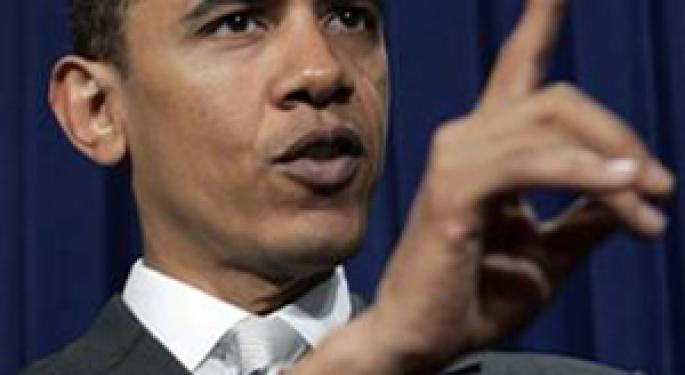President Obama To Announce Sweeping Banking Changes
President Barack Obama is expected to propose new limits on the size and activities of banks. Presidential adviser Paul Volcker is said to be behind the announcement and is scheduled to meet with the President tomorrow before the White House announcement. The proposals will put limits on the size of banks, as well as bar them from engaging in proprietary trading, the practice of trading for their own accounts as opposed to those of their customers.
President Obama's proposal is expected to impose scale restrictions on the size of the largest American financial institutions in an effort to prevent them from becoming so big that they put the economy at risk and distort competitive forces.
It may also put "firewalls" in place between different divisions in financial institutions so that banks don't subsidize speculative trading through banking subsidiaries whose deposits are insured by the federal government.
The proposed rules may also prohibit banks from running hedge funds, investing in real estate or private equity. These businesses have become important, profitable components of the biggest banks but they've also led to increased risk taking that has put the broader economy at risk. It was the collapse of two highly leveraged hedge funds that began the process that led to the collapse of Bear Stearns.
The proposal would have the biggest effect on giants such as Bank of America Corp. (NYSE: BAC), Wells Fargo & Co. (NYSE: WFC), and J.P. Morgan Chase & Co. (NYSE: JPM), which control a large amount of U.S. deposits, as well as Goldman Sachs (NYSE: GS), Morgan Stanley (NYSE: MS) and Citigroup Inc. (NYSE: C) , which have a large presence on Wall Street. If it looks like the new rules could take effect, it could lead to a sell off of the shares of most of the big financial stocks if investors believe that these companies would be facing years of turmoil and potentially lower profits.
Some observers are calling the proposals Glass-Steagall II after the landmark act that was enacted after the Great Depression to prevent another depression from occurring in the US. The act introduced banking reforms, such as the separation of commercial and investment banking, that were intended to curb speculation and established the the Federal Deposit Insurance Corporation (FDIC).
The provisions that prohibit a bank holding company from owning other financial companies were repealed on November 12, 1999, by the Gramm–Leach–Bliley Act. The wall that had separated commercial and investment banking came tumbling down and led to a wave of mergers and acquisitions as well as increased risk taking on the part of the nation's biggest financial firms.
The repeal enabled commercial lenders such as Citigroup to underwrite and trade instruments such as mortgage-backed securities and collateralized debt obligations and establish so-called structured investment vehicles, or SIVs, that bought those securities.
Critics of the 1999 deregulation say that it led to an increase of speculative trading on the part of the biggest banks that was a direct contributing factor for the global economy's recent woes.
Still, a White House aide said that the proposals wouldn't reinstate the exact limits put in place by the Glass Steagall Act, which essentially walled off commercial banks from investment banks. Instead, the White House proposal would seek to return to the "spirit of Glass Steagall," meant to limit large banks from becoming too big and complex that they create great risk risk.
© 2025 Benzinga.com. Benzinga does not provide investment advice. All rights reserved.
Posted-In: Bank of AmericaNews Rumors Politics Topics Economics Markets General



